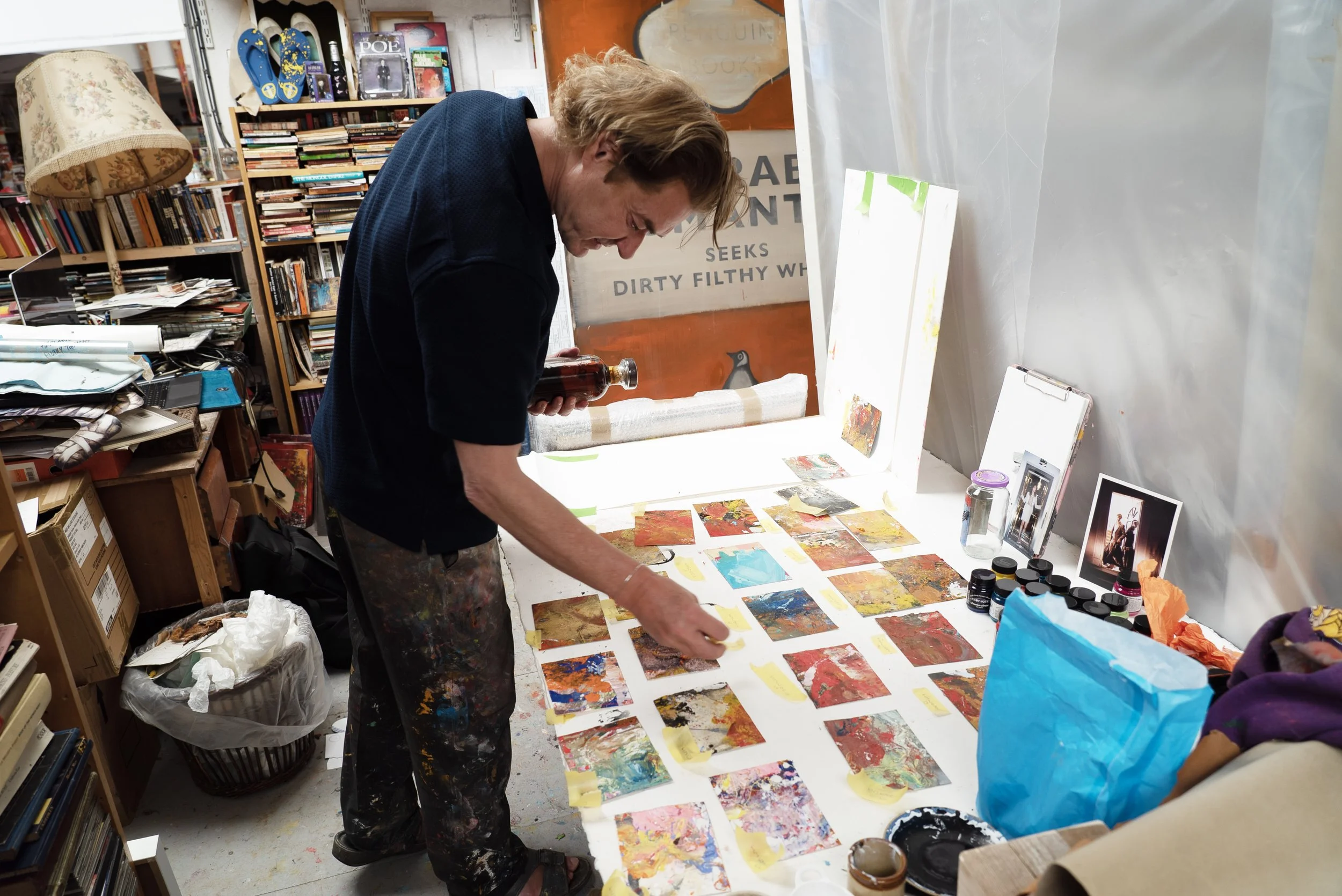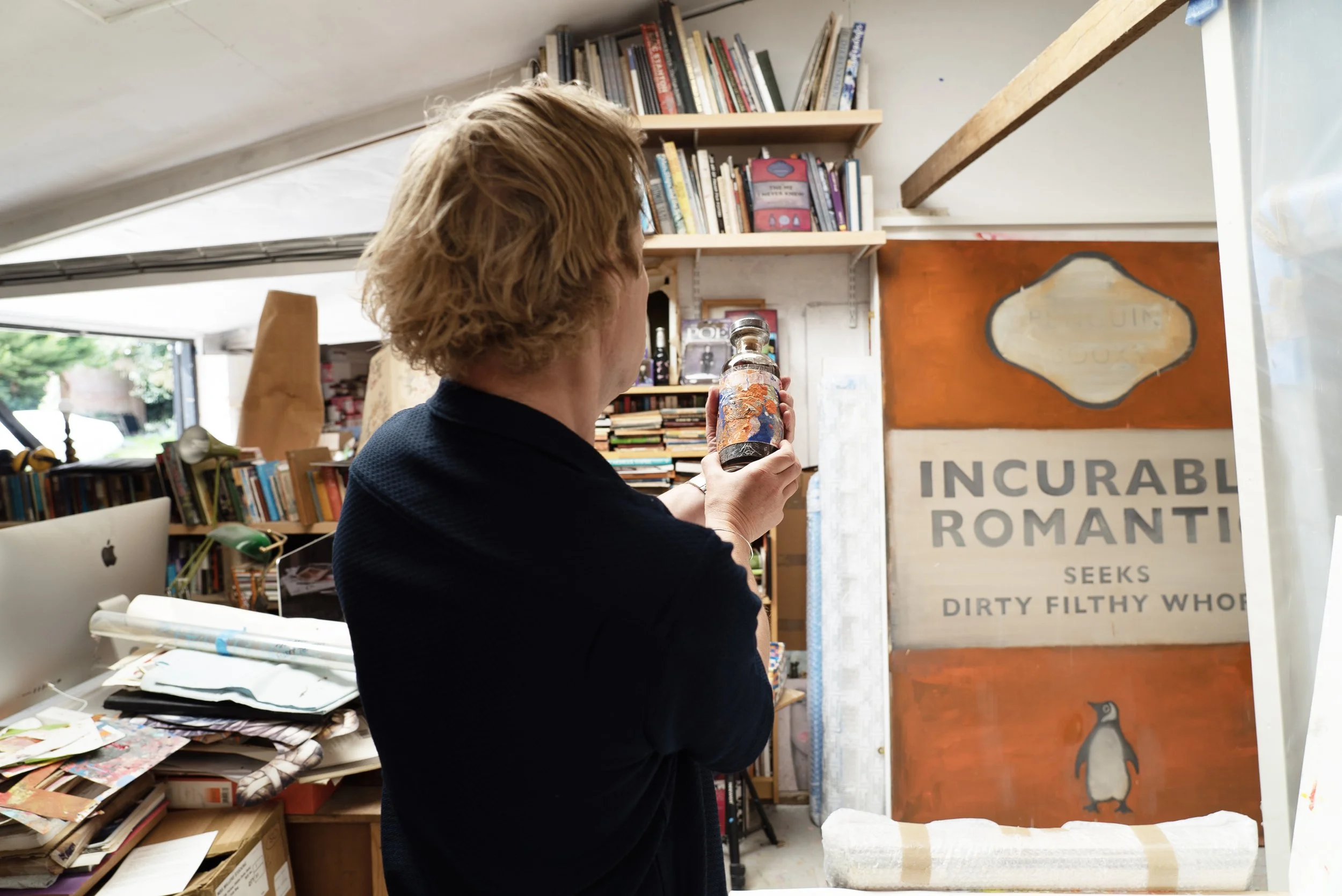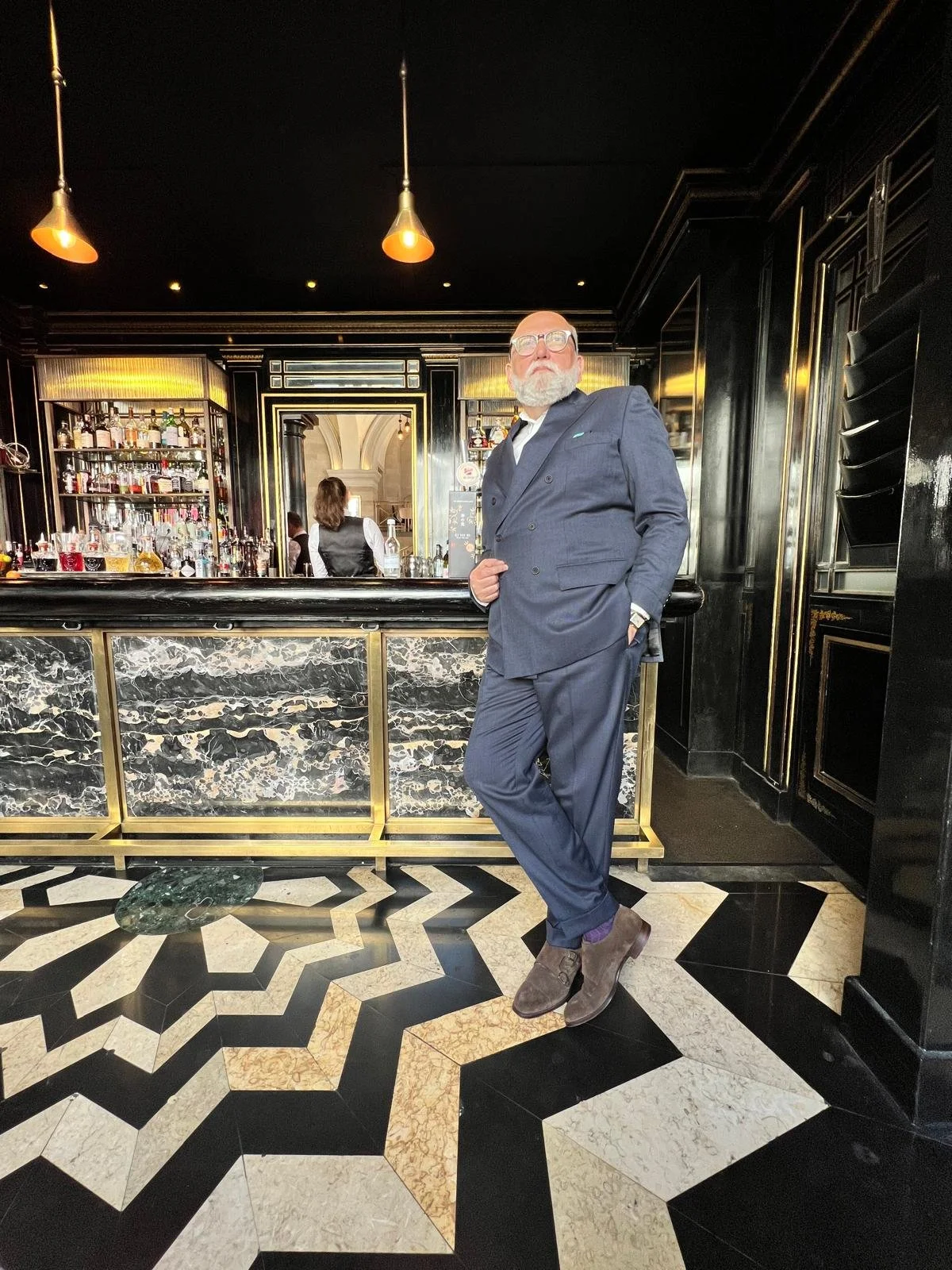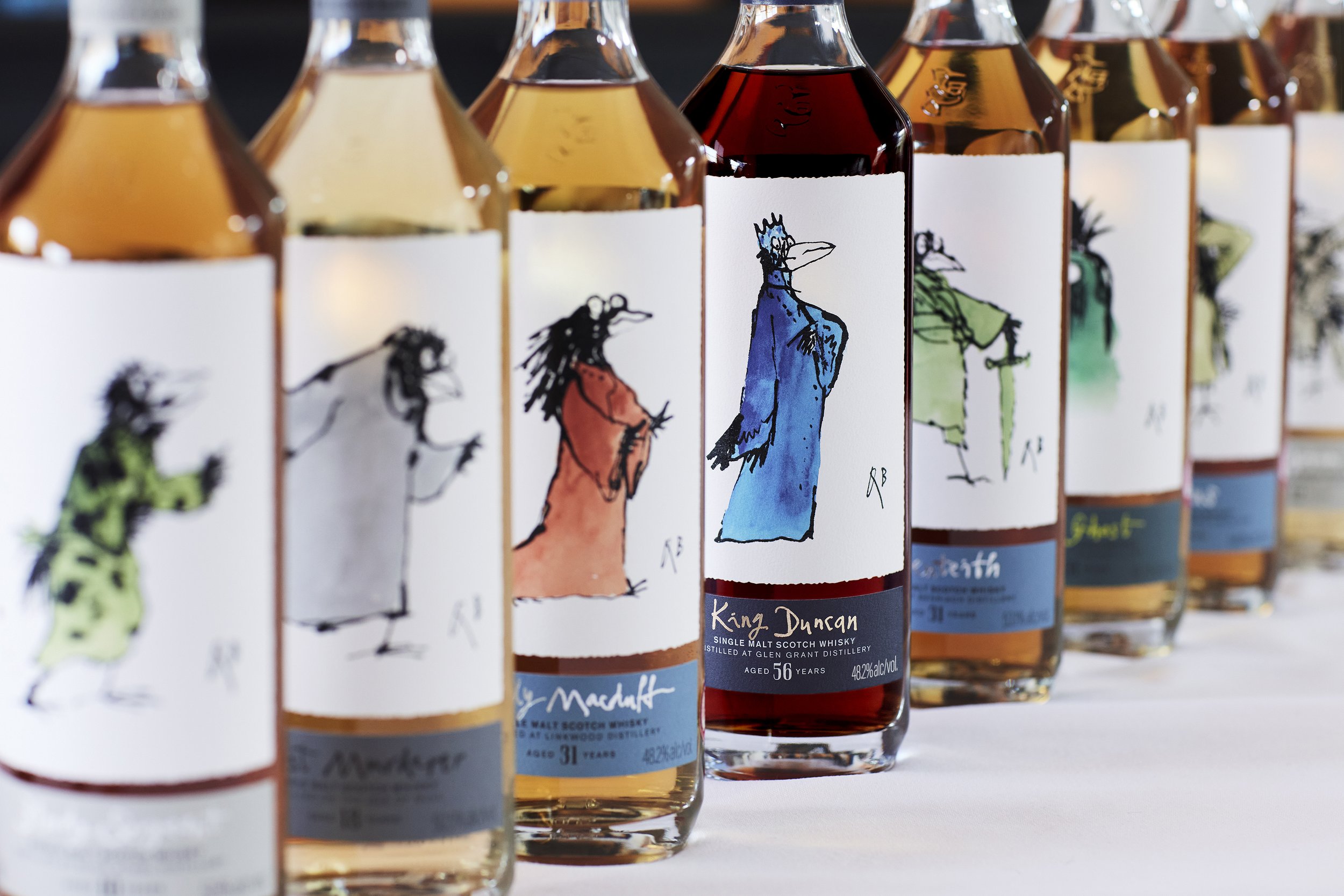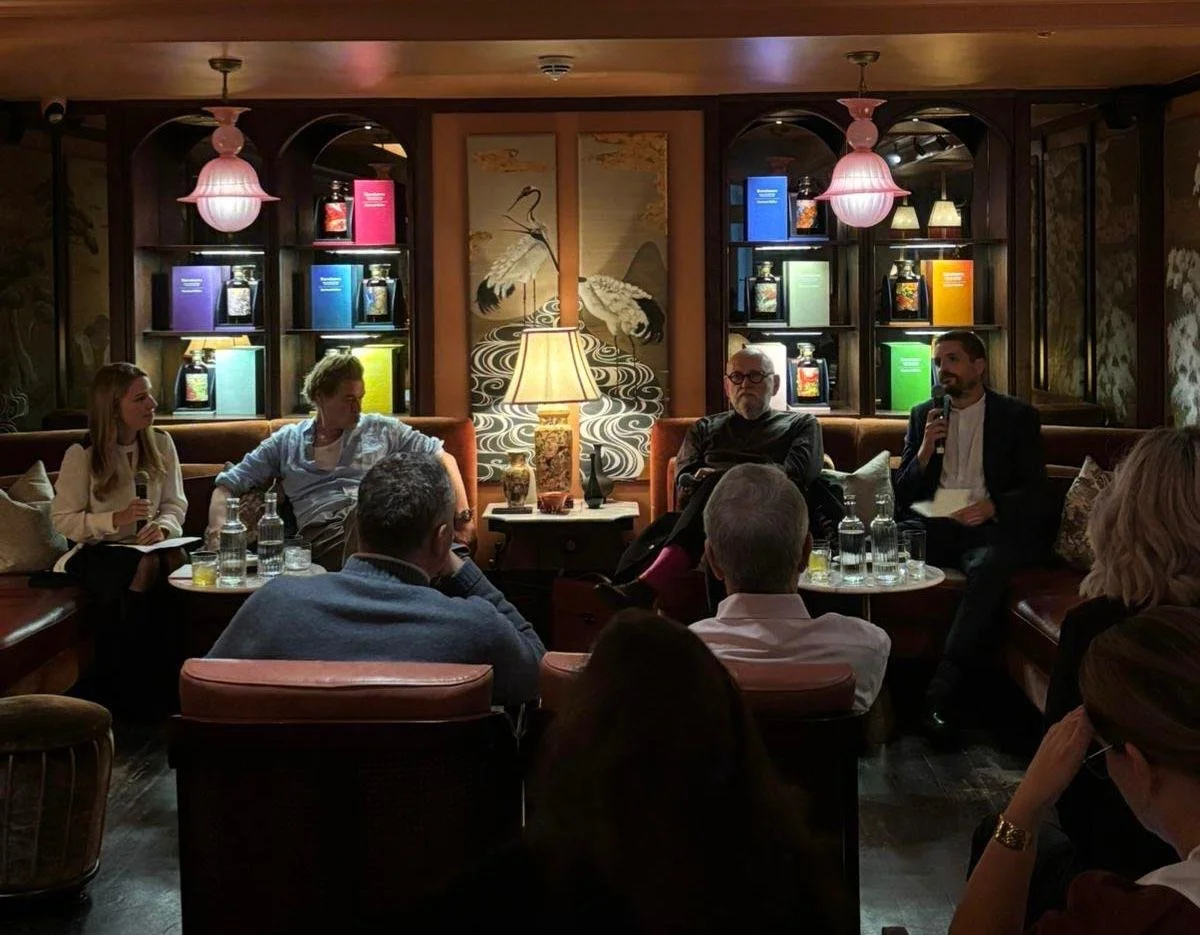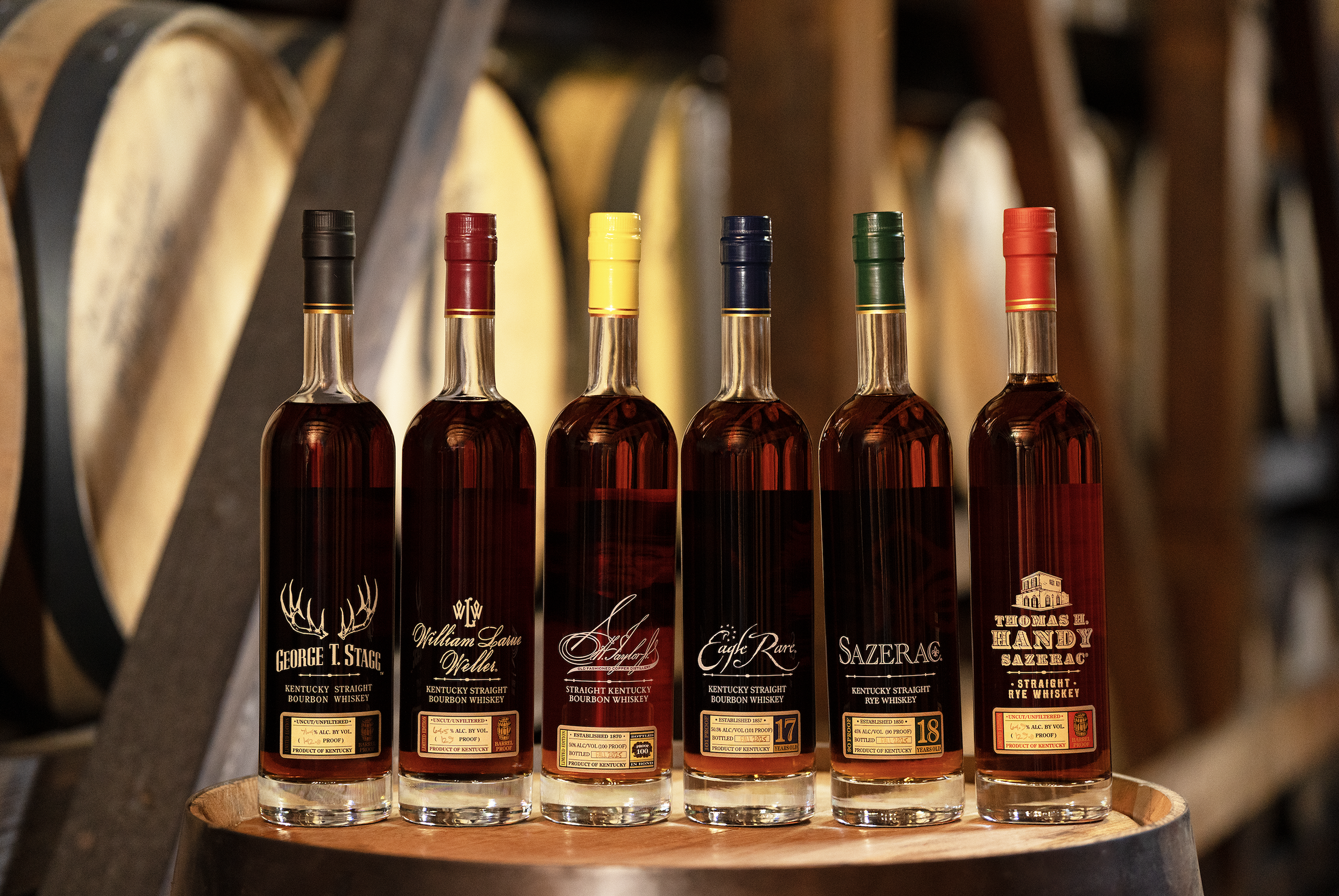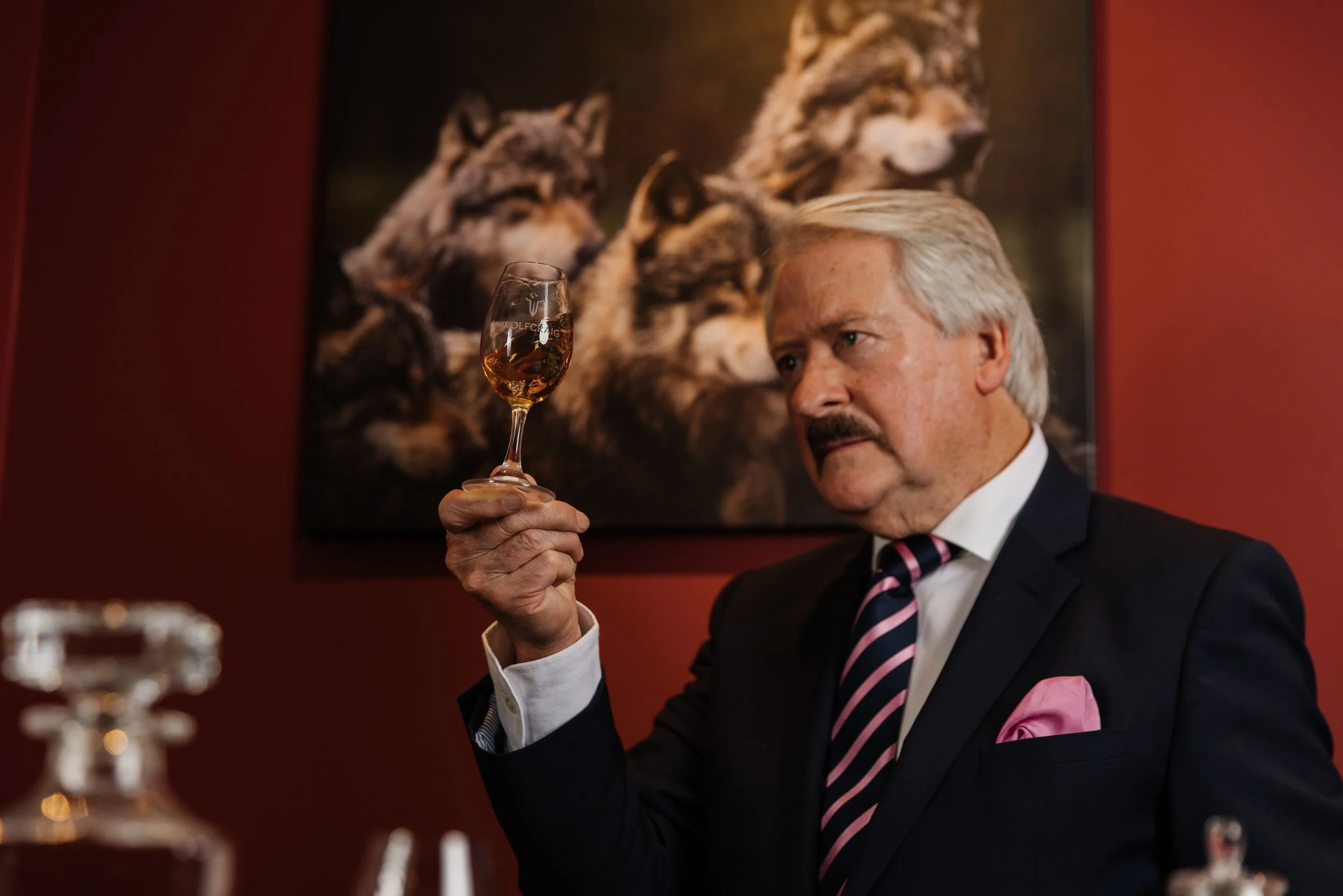How whisky’s most generous man gave away his rarest treasure
Harland Miller in his studio, creating an early draft of the art works that would go on to be used as the bottle labels
When whisky veteran Marcin Miller teamed up with contemporary artist Harland Miller, the result was more than a collaboration – it was a parting gift. Ten final bottles of Japan’s legendary Karuizawa whisky, each hand-painted and donated to charity. Tom Pattinson meets the men behind the most extraordinary release of the year
Splayed in front of me is a man who has the casual swagger of an ageing Hollywood movie star and the dress sense of a character from an early Tarantino film. An open denim shirt with a tight white T-shirt beneath, yellow-tinted sunglasses (indoors), and bouffant slicked-back hair dyed a bold orange. He gulps from his whisky whilst slouched in a low chair in the Aubrey – the basement bar of the Mandarin Oriental Hotel in Knightsbridge. Instead of the Cajun drawl I half-expect, a broad Yorkshire lilt cuts through the clinking glasses. This is no fading actor. This is the rock-star artist Harland Miller.
Miller is best known for his witty faux book covers with titles like Murder – We’ve All Done It. His large-scale paintings sell for seven figures. Even a decent print will set you back a few grand. He’s here thanks to another rock star of a different sort, sitting beside him this evening.
Marcin Miller – whisky industry legend, publisher, raconteur, and all-round good egg – sits upright in classic tailoring: bottle green corduroy, with a chocolate brown turtleneck. Calm where Harland is chaos, articulate where his friend is exuberant. Marcin is known throughout the drinks world for being generous with his time, his knowledge and his contacts. Tonight, that generosity takes liquid form.
We’re here to celebrate the launch of an impossibly rare release: ten bottles of Karuizawa whisky, each one bearing a different hand-painted label by Harland Miller himself.
The story began decades ago, in Japan, where Marcin was visiting in the 2000s while editing Whisky Magazine. He stumbled across a distillery halfway up the slope of an active volcano, famed for its astonishingly pure water source. Karuizawa, founded in 1955, used traditional Japanese mashing and malting methods, and the region’s misty climate proved perfect for maturing high-strength whisky in the sherry casks the distillery mainly used.
Miller inspecting his work on one of the 10 bottles of Karuizawa
The whisky, Marcin explains, was “so beguiling that the story and the liquid needed to be shared. They imported all the barley from Scotland – Golden Promise barley, 100%,” he says. “They made it in small stills to create a heavy spirit. And they matured everything in sherry butts – Spanish casks. So it’s as traditional as possible, and as expensive to make as possible too.”
“At the time,” he continues, “it was the highest distillery in altitude in Japan at 850 metres above sea level. So, an extraordinary microclimate of humidity – it was misty every other day. And the way that impacts the whisky from Karuizawa is the water in the casks would evaporate before the alcohol. So you ended up with high strength flavour bombs. All the flavours, all the aromas, all the goodness from the Golden Promise and the sherry oak cask, so concentrated and rich and extraordinary.”
That magic – and a bit of luck – led to Marcin’s next move. During a 2005 visit to the distillery, he sampled 69 casks with whisky expert Dave Broom and Marcin’s business partner in Number One Drinks David Croll, and was blown away by every single one of them.
Marcin Miller – the most generous man in whisky – in his natural habitat
“I was in this distillery and noticed they weren’t distilling. It was eerie, quiet, spooky – no smell of work,” he recalls. “And I said, ‘David, can you ask our kind hosts whether they’d sell it to us, as this distillery is clearly not distilling’.” The answer was a polite but definite no. So instead, he asked if they might buy the entire stock. “I had no idea how we would fund it. I had no idea how we would sell this,” Marcin says. But a few years later, Croll and Miller struck a deal and by 2011, they owned 364 casks of Karuizawa.
The company was later hailed by the Financial Times as ‘the business that kick-started the trade in Japanese whisky,’ and today Karuizawa’s cult status is part quality, part mythology. A ghost distillery that produced its first whisky in the late fifties, and in 1976 released the first ever single malt Japanese whisky. Karuizawa is still to this day considered to be the finest Japanese single malt ever made. Demand continues to rise while supply, quite literally, evaporates. It’s almost impossible to find a bottle for less than £10,000 on the open market. A bottle of 52-year-old Karuizawa Cask #5627 Zodiac Rat 1960 fetched a record-breaking £363,000 at Sotheby’s in 2020.
But now Marcin says: there are no more casks, no more bottles of Karuizawa. “These are the last ten. So, we have come to the end of our Karuizawa journey.”
And now those last ten bottles have become something even more extraordinary than just what the bottle contains – thanks to the friendship between Marcin and Harland, and a shared friend, Craig Hollingworth, chairman of the arts charity Migrate Art.
“Around two years ago, Marcin approached me and said he had some very special bottles of whisky, part of a very important Japanese distillery,” says Hollingworth. “They had no labels, and he said, ‘Craig, you can have them for the charity as long as you find an artist to make the label’.”
Hollingworth immediately thought of Harland. “Typography and a label, right? It made sense.”
When Harland heard about the project, he agreed – though his gallery wasn’t exactly thrilled. “He was in the middle of a show with them, so the [whisky project] was put on pause,” Hollingworth explains. “The next thing I heard, a year later, Harland and Marcin are phoning me and saying, we’ve finished these labels.”
The finished bottles are unlike typical Harland Miller works. There’s no text – no cheeky titles – just abstract explosions of brushwork in reds, oranges and yellows on dark backgrounds. Harland says he was inspired by Mount Asama, on which the distillery was located. “A volcano,” he explains, “is big and bold but calm on the outside – yet, like whisky, can be explosive and fiery too.”
Miller and Miller with Simon Butler (right) at the release of the final 10 bottles of Karuizawa
The thick layers of paint suggest the layers of flavour in the whisky itself – sherry, oak, smoke, fruit – a meeting of art and spirit.
“What was interesting about painting the whisky labels was that when I painted them in the studio, it seemed very small,” says Harland. “When I put them on the bottle, they were really big because it took so much of the bottle, so it ended up having no particular sense of scale at all.”
He laughs recalling the process. It took three tries to get right. The first version was painted on white backgrounds – which didn’t work against the dark, sherry-oaked whisky. The second, flat-surface versions failed to catch the light on the bottle’s curve. Eventually, he hit upon a solution: a wooden block with a bottle-shaped hole in it. A bottle of the whisky would be put in the wooden opening, allowing him to paint directly on the labels as they’d appear. “I was using an actual bottle of the Karuizawa whisky until I nearly dropped one, so I switched it for a bottle of Bell’s,” laughs Harland.
One of the last bottles of Karuizawa and one of only ten in the world to have a hand painted Harland Miller art work attached to it.
The collaboration, says Simon Butler, founder of Migrate Art, “epitomises the power of art and generosity. Harland Miller’s unique works, combined with the rarity of Karuizawa whisky and Marcin Miller’s extraordinary donation, create a project that will deliver real impact for those most in need.”
Migrate Art began amid the refugee crisis of 2016, when Butler visited the migrant camp in Calais, France. Since then, it has worked with a wide range of charities tackling displacement and poverty through creativity. Funds from the sale of unique art works by well-established artists go to supporting refugees in places as far flung as Iraq and the Amazon jungle, to closer to home in the UK.
For Marcin, whose parents arrived in the UK as little children from Poland, the cause resonated deeply. These bottles aren’t just a gift of whisky; they’re a personal tribute.
At £15,000 each (plus VAT), the ten bottles are a bargain – especially considering what they represent. I’m texting friends to see if I could rustle up the cash. Do banks loan that fifteen grand for a bottle of whisky? I’m asking anyway.
When the world’s final drops of Karuizawa have been poured, these bottles will remain: ten tiny, flaming tributes to generosity, art and friendship.
And there they sit in the basement bar: Harland, irreverent and wild, and Marcin, measured and generous – two unlikely rock stars united by a liquid legacy that has made history.

